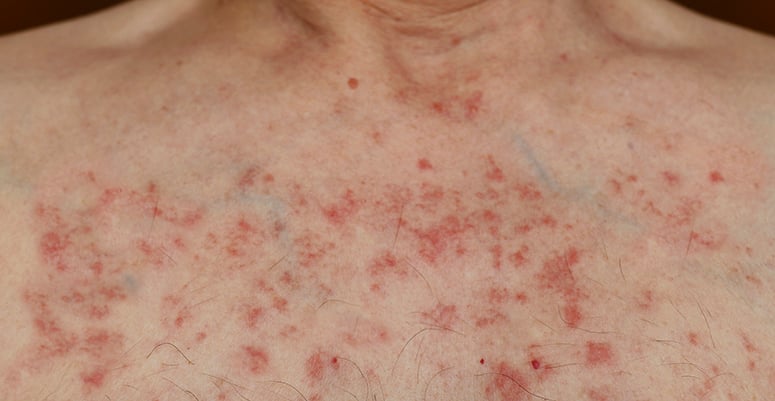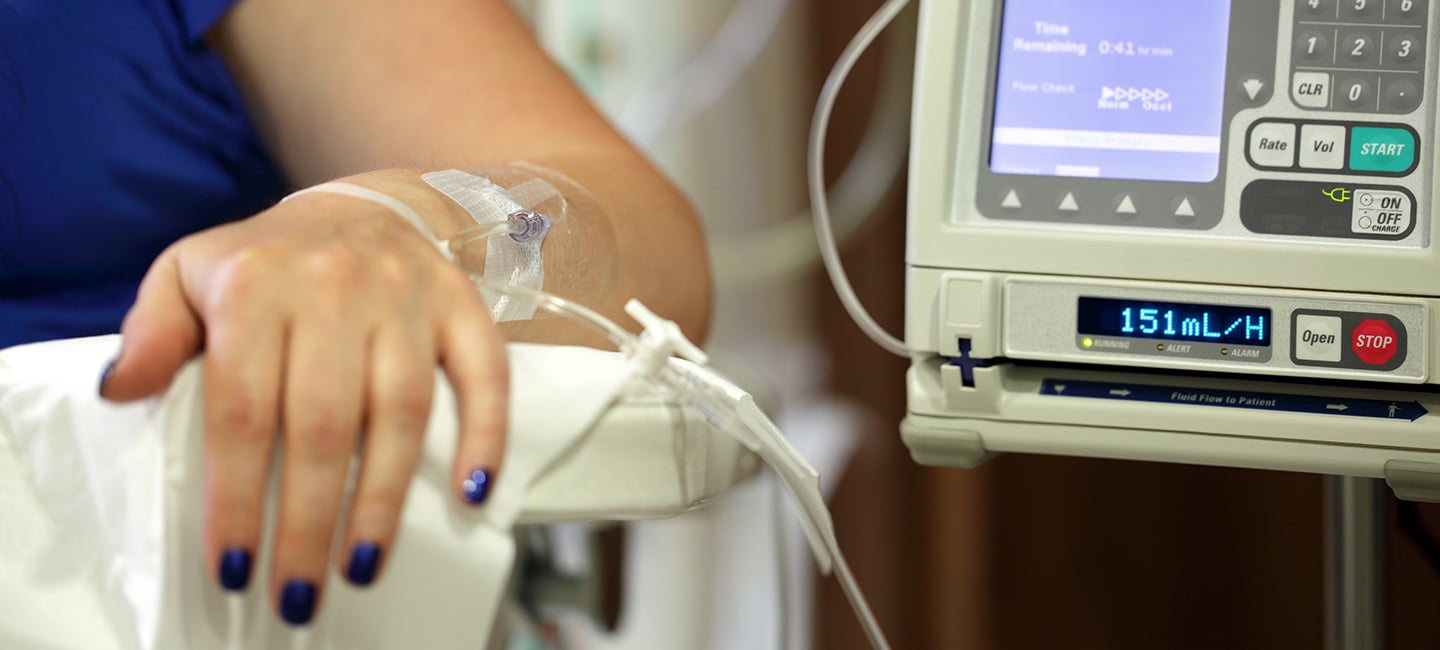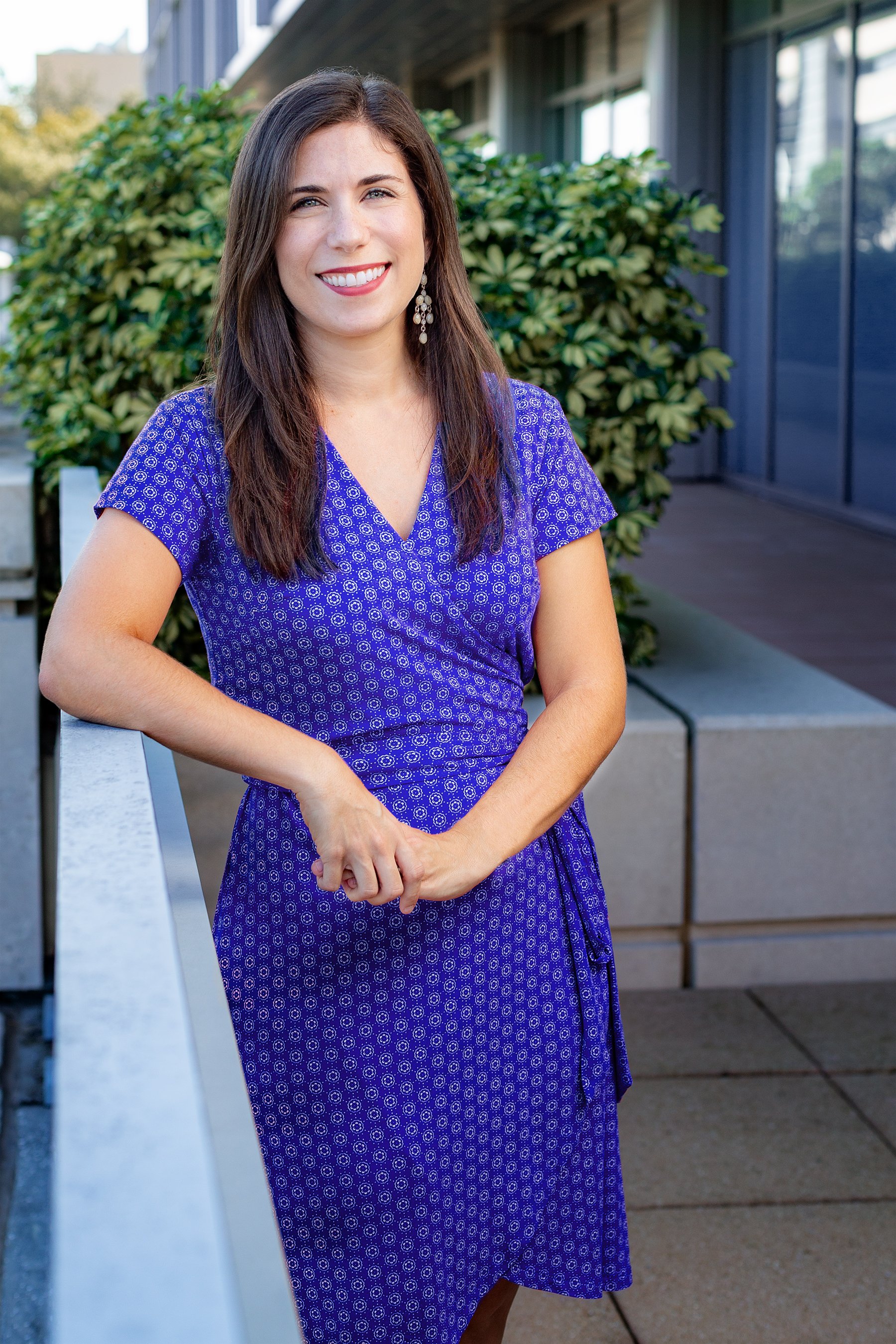What is Chemo Rash?
Cancer treatment can evoke a variety of responses in different individuals, but chemo rash is one commonly occurring side effect. Chemo rash is a general term used to describe the various forms of skin rashes resulting from cancer treatment.
Here’s what you should know.
When does chemo rash occur?
Skin rashes may show up any time throughout cancer treatment but are most common in the first two or three weeks following the start a new treatment. It may be the result of chemotherapy, radiation, immunotherapy, targeted therapy or stem cell transplants. Chemo rash can appear in several different forms.
How serious is chemo rash?
Although skin reactions to cancer treatment are usually not severe, they could indicate an allergic reaction to a medication. They can also be uncomfortable and noticeable, depending on the location. It’s important to note that some treatments are expected to cause a rash, said Krissy Frantz, manager of Moffitt’s Infusion Clinic. “To reduce the irritation, you may be given medication prior to starting certain treatments.”

Allergic skin reaction on a man's chest after chemotherapy.
Where can I get chemo rash?
Chemo rash may appear on the face, scalp, neck, back and chest, but can also show up on the limbs, abdomen and buttocks.
When should I talk to my doctor?
If you think you’re experiencing a skin rash related to your cancer treatment, you should inform your care team when the rash first appears. Additionally, you should notify your care team if:
- Your rash worsens after prescribed creams or ointments
- You have itching that lasts more than 48 hours
- Your rash develops into blisters, becomes bright red, develops pus or crusts over
- Your rash is painful
Chris Walters, a certified physician assistant in the Infusion Clinic, says chemo rashes can also resemble disease processes that require immediate attention. “Therefore, it’s important to contact your doctor with any reports of rash.” He added you should seek immediate medical care or call 911 if your rash is accompanied by any of the following symptoms: hand, foot, facial or tongue swelling; fever, chills, nausea, vomiting or diarrhea.
How can chemo rash be managed?
Treatment for chemo rash can vary based on the type and severity of the reaction. For mild to moderate skin rashes, your doctor may prescribe a corticosteroid cream along with an oral antibiotic or antibiotic cream. If the rash is more severe, you may receive oral corticosteroids, and your chemotherapy regimen may be adjusted. Your doctor may also recommend an antihistamine to combat itching.
What can I do to prevent chemo rash?
Although every patient is different, there are a few steps you can take to prevent the development of chemo rash:
- Wash skin gently using a mild, low pH cleanser
- Avoid scrubbing the skin or using abrasive products
- Use a gentle moisturizer
- Wash clothes with gentle, fragrance-free detergent
- Avoid fragranced skincare products
- Avoid the sun when possible, wear loose fitting clothing that will cover your skin, sunglasses, and a wide-brimmed hat, and use sunscreen with an SPF of 30 or greater
- If you’re also undergoing radiation, ask your provider which skincare products are recommended



